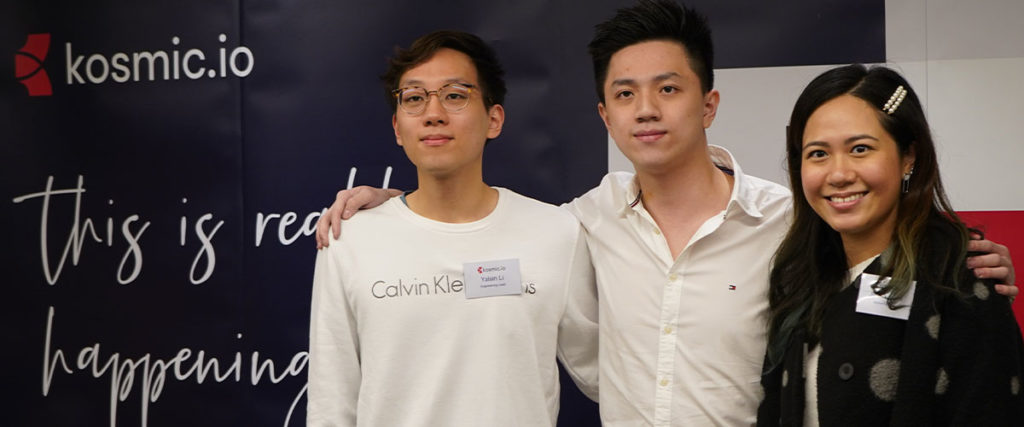Entertainment-based education via live-streamed classes could be the key to helping children learn more efficiently, according to EdTech startup kosmic.io, drawing on inspiration from influencer and content marketing.
Amidst the backdrop of widespread school closures, cancelled IB exams, and a whopping 1.37 billion students out of school (80% of the global student population), teachers and parents alike are scrambling to find a technological solution to compel an entire generation to learn. Enter EdTech startup kosmic.io, a Hong Kong-based firm that has recently launched the city’s first live-streaming platform for students, offering a much-needed alternative to traditional education mediums during the coronavirus pandemic. “We wanted to create a platform whereby the educational content can be tailored to students, or, in layman’s terms, be addictive,” co-founder and CEO Matthew Ng explains of their vision. “Educational content is boring. That’s a huge problem right now.” Having started up the company in August 2019 with a founding team of five, he’s since created a business model based on ‘celebrity teachers’ – live streamers who apply to the platform to create content, build up an engaged audience and provide secondary school students with a new, fun, and entertaining form of learning. We sat down with Matthew to talk through how the COVID-19 pandemic has kickstarted the virtual learning industry – and the types of changes we might see long-term, given such a radical shift.

“I think the coronavirus has disrupted the education industry in a lot of ways. It has forced students and teachers to use technology to distribute knowledge or to learn online for the first time,” Matthew says. With over 4000 active users in Hong Kong and a host of tutors, teachers and high-performing students who live-stream sessions, he’s tapping into a global education market – valued at USD 500 billion, pioneering a new wave of entertainment-based learning – a shift which he believes is long overdue. With initial plans to penetrate the Hong Kong secondary education sector – worth USD 60 million – for students aged 15-19, Matthew hopes to scale kosmic.io to encompass the USD 121 billion-dollar global secondary education industry and, eventually, expand his offering to the USD 425 billion-dollar adult education sector.
Drawing inspiration from influencers and content marketing strategies which revolve around producing content that piques interest, he explains, “When you have the expertise of retaining audiences and you plug that into education, that creates something that students will want to watch and be willing to stay until the final minute of that content.” Learning has the potential to be much more effective when students are motivated to pay closer attention to the content, whether that’s a result of humour, brand authority, or sheer efficiency. Taking a local live streamer as an example, Matthew explains, “He makes a lot of local jokes. So that’s why a small segment of local students love him. They find him funny so they want to watch his videos.” Another streamer, Matthew reports, flies through the material in 15 minutes – material which might have taken local teachers an hour or two.
You might also like VR & AR: A New Reality for Learning

So can live streaming platforms like kosmic.io replace traditional education? When it comes to delivering knowledge to students, Matthew responds with a resounding yes. However, the technology has its limitations. Right now, “Online technologies or educational technologies cannot replace the face-to-face interactions and in-depth personalised feedback given by an actual teacher. It’s not a perfect substitute.” This is because a live-streaming platform is simply not equipped to provide that all-important follow-up support after a lesson, nor can it accurately evaluate what a student needs to succeed – a status quo which Matthew believes will hold true for at least another three to five years.
On a macroscopic level, the online education industry is experiencing major growth – the Financial Times reports that Indian EdTech startup Byju has experienced a 60% increase in users, Chinese tech-learning firm GSX’s shares have experienced a 92% uptick in value, and Hong Kong tutoring startup Snapask managed to close USD 35 million in investments earlier this year. “The EdTech landscape is fairly simple. You have B2B sites where they sell technologies to schools like administration portals or teaching portals. Then, there are also some B2C tools that help students to learn,” Matthew explains. “We started in Hong Kong because it’s one of the hardest markets to crack. Students are slow to adopt new technologies. Once we’ve figured out the model or product for students to learn, we can tell investors or public partners that we’ve cracked it. And now, we’re moving on to markets like China, the United States and England.”

The coronavirus pandemic has forced a generation of students to adopt online learning technologies, accelerating the development of these technologies by providing operators with a wealth of data. “We learned a lot about user behaviour that has given us a lot of product directions and I’m sure other education technology operators have learned the same thing as well,” Matthew says. “This will have a very, very lasting impact on the global education mindset.” With ambitious plans to scale their offering to high school students in the UK, US, and China, and, eventually, the adult education market, kosmic.io is ready to take on the challenge.
Related Articles
Disney Codeillusion: Teaching Kids To Learn To Code
The App Designed to Help Students in Asia Learn from Each Other





